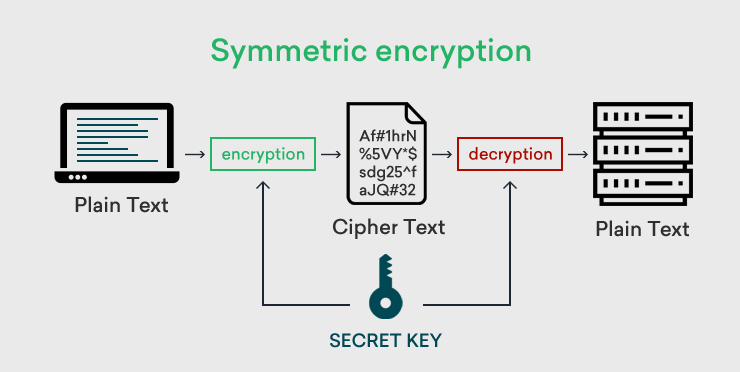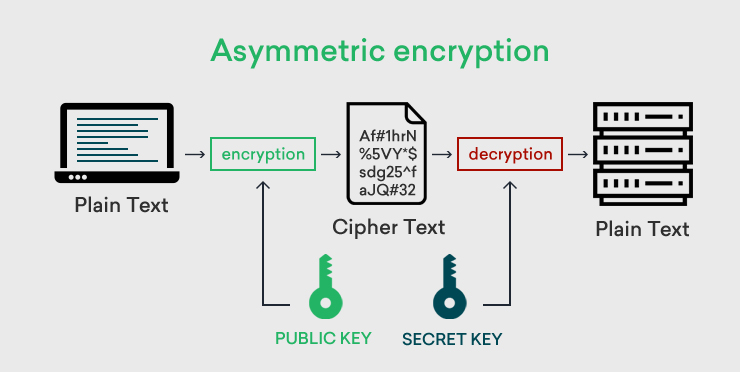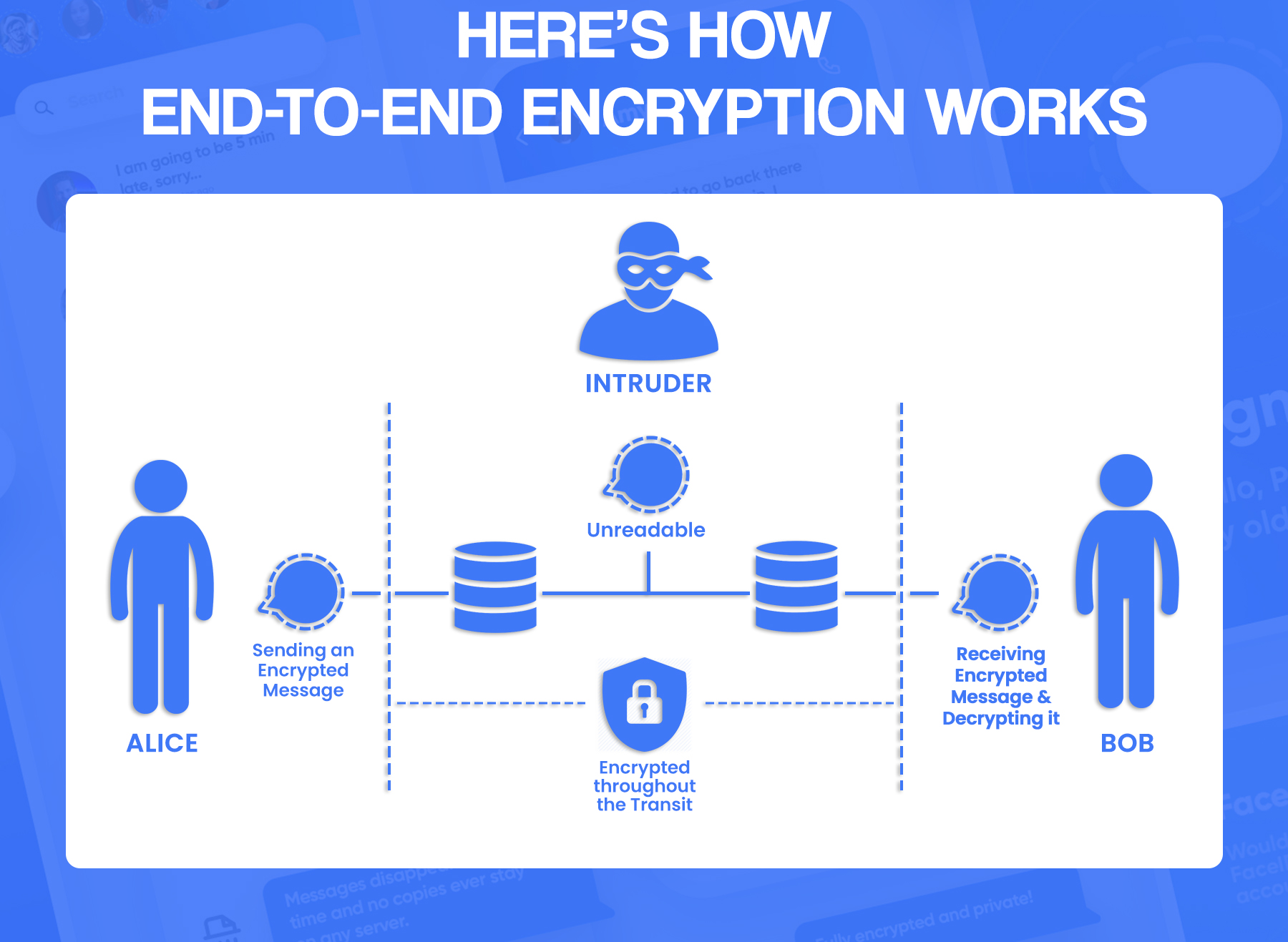Important Facts For Prelims
End-to-end Encryption
- 03 Feb 2024
- 5 min read
Why in News?
End-to-end encryption is crucial for cybersecurity, ensuring secure transmission of sensitive data by encoding it exclusively for the sender and recipient.
- It protects against unauthorized access, theft, surveillance, and tampering, especially in the face of rising cyber threats.
What is Encryption?
- About: Encryption involves transforming consumable information into an unconsumable form according to various rules, fundamentally encompassing different rule sets.
- In this context, the key is a set of data that enables a computer to decrypt encrypted text by understanding the specific rules used to encrypt it.
- E2E Encryption: E2E encryption involves securing specific points through which data is transmitted.
- When communicating with a friend on a messaging app, messages are encrypted during transit to prevent unauthorized access, employing both encryption-in-transit, which secures messages during relay between the server and the user, and end-to-end encryption (E2E), which ensures encryption both during transit and while stored on the server until the recipient decrypts it.
Think of it like this:
1. Regular message: Sending a postcard - anyone can read it.
2. End-to-end encryption: Sending a sealed, coded letter - only the recipient with the right code can read it.
- Process of Encryption: Various encryption methods can be employed based on the desired level of secrecy and protection for information.
- Symmetric encryption involves using the same key for both encrypting and decrypting information, with Data Encryption Standard (DES) serving as a well-known example of a symmetric encryption protocol.
- Symmetric encryption, exemplified by the Advanced Encryption Standard (AES) used in scenarios like encrypting a computer's hard drive or setting a WiFi password, proves beneficial when the sender and recipient are identical entities.

- Symmetric encryption, exemplified by the Advanced Encryption Standard (AES) used in scenarios like encrypting a computer's hard drive or setting a WiFi password, proves beneficial when the sender and recipient are identical entities.
- Asymmetric encryption, also known as public-key cryptography, operates on the principle of using a pair of keys: a public key and a private key.
- The public key is openly shared and can be used by anyone to encrypt messages, but only the possessor of the corresponding private/secret key can decrypt those messages.
- This asymmetric encryption approach ensures secure communication without the need for both parties to share the same key. This way, the encryption process can be public, but decryption remains private, providing a secure means of communication.

- Symmetric encryption involves using the same key for both encrypting and decrypting information, with Data Encryption Standard (DES) serving as a well-known example of a symmetric encryption protocol.
- Vulnerabilities of E2E Encryption: While E2E encryption is a robust security measure, various factors, including potential vulnerabilities like Man In the Middle (MITM) attacks, user complacency, malware threats, company backdoors, and legal requirements, can impact the overall security of encrypted messages.
What is the Role of Hash Function?
- There are different symmetric and asymmetric schemes that encrypt messages in different ways, i.e. using different hash functions.
- The role of a hash function is to encrypt a message while ensuring certain properties:
- Message Concealment: The hash function should take an input message and generate an encrypted version known as the digest. Importantly, given the digest, it should not reveal information about the original message.
- Fixed-Length Output: The function should accept messages of variable lengths and produce a digest with a fixed length. This prevents deducing the original message length from the digest length.
- Unique Digests: The hash function must produce unique digests for unique messages, ensuring that different messages do not result in the same hash.
- The role of a hash function is to encrypt a message while ensuring certain properties:
UPSC Civil Services Examination, Previous Year Question (PYQ)
Prelims:
Q.The terms ‘WannaCry, Petya and EternalBlue’ sometimes mentioned in the news recently are related to (2018)
(a) Exoplanets
(b) Cryptocurrency
(c) Cyber attacks
(d) Mini satellites
Ans: C
Mains:
Q. Keeping in view of India’s internal security, analyse the impact of cross-border cyber-attacks. Also, discuss defensive measures against these sophisticated attacks. (2021)







